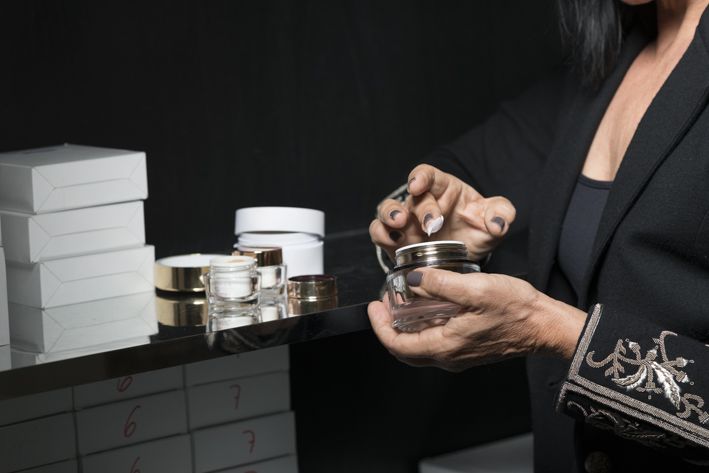Hyaluronic Acid: What Advantage does it Really have in Creams?
Whether day skin care, serum or gel, hyaluronic acid is lauded as THE miracle weapon in the field of anti-aging. It is purported to cushion the skin, smooth wrinkles and balance roughness. But is the praise really justified?
The body’s own natural substance
Hyaluronic acid (HA for short) is, at least, not foreign to the body. Chemically speaking, it is a polysaccharide, i.e. a multiple sugar, and thus an important component of various types of connective tissue. It is the main component of our synovial fluid and lubricates the joints. The largest proportion of HA, about 50 percent, is stored in the skin. Its task is to bind enormous amounts of water – up to six liters per gram. Unfortunately, the body’s own production also decreases with age, starting from around the age of 25. At 50, the water reservoirs are only half full and this begins to become noticeable in the outside appearance: Fine lines and wrinkles, sunken cheeks, crow’s feet or a deepening of the nasolabial fold are classic signs of hyaluronic acid deficiency. The elasticity of one’s own skin, the so-called skin turgor, can be measured easily: one raises a skin fold on the hand with two fingers and releases it. Depending on the moisture content, the wrinkle remains or restores itself elastically. By the way, cracking joints are also an indication that hyaluronic acid is decreasng in the synovial fluid.
Chain reaction
The empty depots cannot be filled as easily as one might imagine, and certainly not with an externally applied cream. Whether this has an effect and what that effect may be is mainly due to the size of the HA molecules. Simone Presto, physician and expert for the Eucerin HyaluronPlus series, confirms this: “The long-chain (high-molecular) hyaluronic acid is a very large molecule which remains on the skin. The medium-chain hyaluronic acid penetrates a little deeper into the superficial skin layers through the epidermis, up to about the middle of the 12 epidermal layers. The short-chain (low-molecular) hyaluronic acid can penetrate more deeply.” But, as the doctor admits, there is a limit here as well. Even the smallest HA molecules cannot break through the basal membrane, the bottom layer of the epidermis, where cells are constantly produced. No innovative cosmetic can overcome this. The short-chain hyaluronic acid is deposited there and swells up because it binds water from the tissue. In this way, it can not only ensure that wrinkles become flatter, but also that cell communication is maintained.… weiterlesen

CultureAndCream Author from Munich
To travel during my profession as a beauty journalist was never enough for my. Also my six month on a world trip didn’t do it. It always attracts me to other cities, foreign countries, on roadtrips and places I don’t know yet. But I am not only interested in “culture” and “cream”, I am also fascinated by people who have stories to tell . Such unique experiences I want to share with you.
